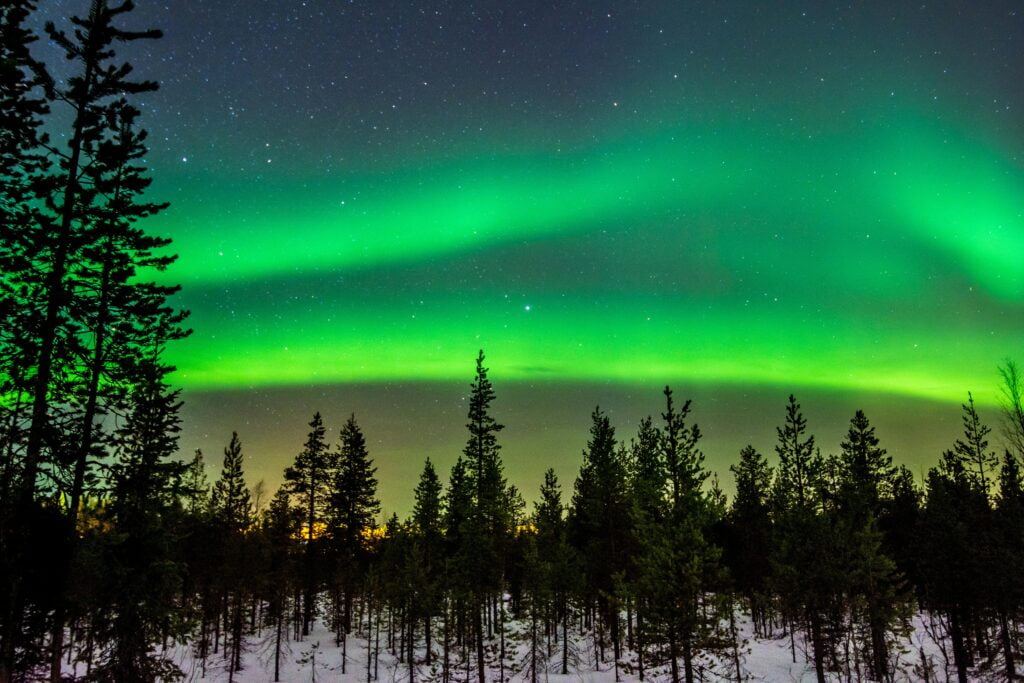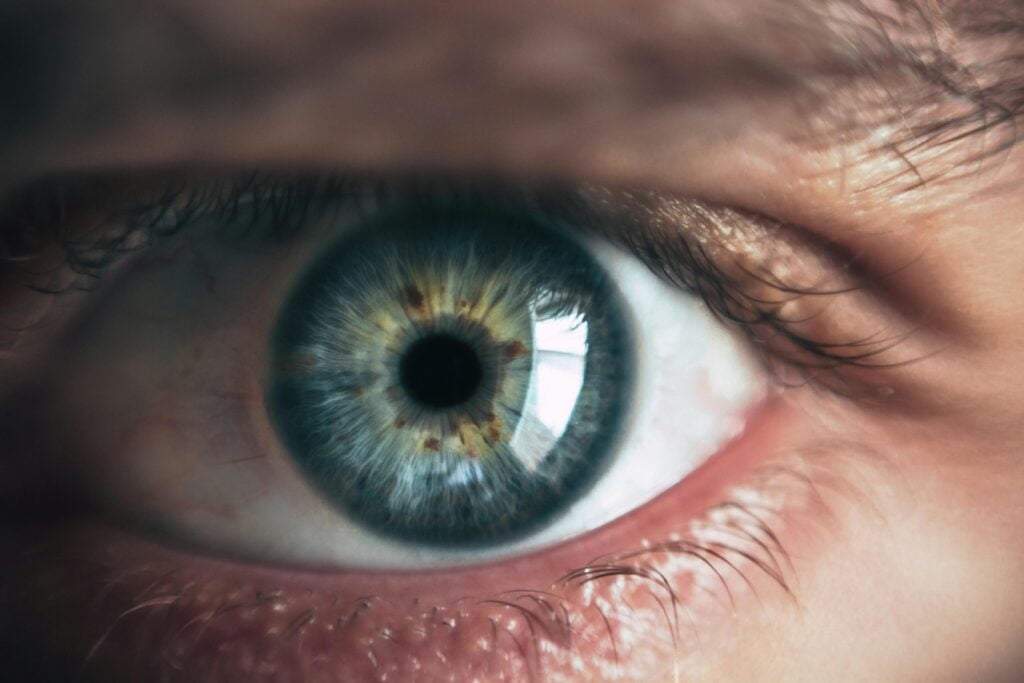Is Aurora Visible to the Human Eye?
Is Aurora Visible to the Human Eye? : Have you ever wished you could witness the most spectacular light displays in the natural world? The northern lights, or Aurora Borealis, are a mesmerizing display of pulsating colors that have mesmerized people for centuries. While everyone is amazed, many are wondering if it is possible to see the Aurora Borealis up close.
Understanding Aurora:

Before we consider the question of whether or not they can be seen with the naked eye, we need to know what produces these celestial wonders, the auroras. Charged particles of the Sun collide with gases in the Earth’s atmosphere to produce polar rays, which are breathtaking to watch. The Southern Hemisphere is graced with the Aurora Australis, while the Northern Hemisphere is graced with the Aurora Borealis, which is the more prevalent form.
Origin of Auroras:
The interaction between charged solar particles and the Earth’s magnetic field is the source of the aurora. Charged particles in the solar wind move toward Earth, where they will encounter the planet’s magnetic field. The light is produced when charged particles collide with atmospheric gases, causing them to move downward toward the poles.
Auroral Zones:
Typically, auroras cluster in areas called auroral zones, which are located close to Earth’s polar regions. Aurora australis describes the auroral zone in the Southern Hemisphere and Aurora Borealis describes the Northern Hemisphere. These regions are responsible for the breathtaking light show because this is where solar particles are directed by the Earth’s magnetic field.
Gases Involved:
Nitrogen and oxygen are the main gases that cause the auroras to erupt in multicolored displays. When solar charged particles collide with these gases at great heights, they get energy. The energetic particles that make up the aurora evolve back into their regular form and emit light photons, which are responsible for the show’s vivid colors.
Color Spectrum:
The gas molecules of the atmosphere and the altitude at which they collide determine the visible colors of the aurora. The red and green colors in the aurora are usually the result of oxygen molecules, while the blue, purple and pink colors are the result of nitrogen molecules. The diverse color spectrum seen in auroral displays is a result of the different heights at which these collisions occur.
Frequency and Seasonality:
While auroras do not occur every time the Sun is active – for example, during solar flares or coronal mass ejections – they are more common at these times. Additionally, auroras are more likely to appear around the March and September equinoxes, when Earth’s magnetic field is in more favorable alignment with the solar wind.
The complex interactions between the Sun, Earth’s magnetic field and atmosphere become better understood when we have a better understanding of the processes that cause auroras.
Human Eye and Light Perception:

The human eye is an extraordinary sensory organ that can detect a wide range of light frequencies. But their sensitivity varies at different wavelengths. Perceiving dim sources of light, especially at the extremes of the spectrum, is more challenging for the human eye than perceiving visible light, which encompasses all the colors of the rainbow.
Structure of the Human Eye:
The optic nerve, cornea, lens, pupil, and retina are all complex parts of the human eye. Light perception and visual perception depend on each of these structures.
Function of the Retina:
Located at the deepest layer of the eye, the retina is home to photoreceptor cells, specifically rods and cones. Cones allow us to see in bright light and color, while rods are in charge of seeing in dim light and detecting motion.
Adaptation to Light Levels:
Amazingly, the human eye can accommodate different amounts of light. When light is dim the pupil dilates to allow more light into the eye, and when light is bright it constricts to protect the eye from excess light.
Perception of Visible Light:
The human eye can only detect light that is within a narrow range of wavelengths on the electromagnetic spectrum. All the colors of the rainbow – violet, blue, green, yellow, orange and red – fall within this range, which extends from about 400 to 700 nanometers.
Sensitivity to Light:
Even while our eyes can detect visible light, their sensitivity differs depending on the wavelength. As one moves from the green-yellow end of the light spectrum to the violet and red ends, the eye’s sensitivity decreases.
Limitations of Human Vision:
The human eye is incredibly powerful, yet there are limits to how much light it can see. To give just one example, it is not able to detect light outside the visible spectrum, such as infrared or ultraviolet light. Due to the reduced sensitivity of the eyes, it is already difficult to recognize small features in low light.
Role of Brain in Perception:
There are many mental processes involved in light perception beyond what the eye can do. The perception and interpretation of visual information is made possible by the brain’s interpretation of signals received from the retina.
The complexities of the human visual system, including how light is perceived by the eye, shed light on our visual experiences and the wonders of the natural world, such as the Aurora Borealis.
Table of Contents
Visibility of Auroras:

Now the topic is coming up whether Aurora can be seen with naked eyes. Yes, but there is a problem. The visibility of an aurora is determined by its brightness and intensity. During times of maximum solar activity, when auroras are brighter and more powerful, they can actually be seen with the unaided eye, even in somewhat light-polluted areas.
Factors Affecting Visibility:
When the aurora is visible to the naked eye depends on several things:
- Solar Activity: The strength of geomagnetic storms and solar flares has a direct impact on how strong auroras are.
- Atmospheric Conditions: The ideal conditions for stargazing are clear, dark skies free of artificial light.
- Geographical Location: As one moves closer to the planet’s magnetic poles, the chances of seeing the aurora borealis increase.
Tips for Spotting Auroras:
Some things you can do to increase your chances of seeing the Aurora Borealis or Aurora Australis up close and personal are:
- Check the Aurora Forecast: When the auroras are activated in your location, you can receive real-time updates on websites and apps.
- Seek Dark Skies: For best viewing conditions, go to secluded areas where there is less light pollution.
- Be Patient: Be prepared to look carefully at the night sky, as auroras can be difficult to spot.
Conclusion:
In conclusion, it is possible to see these heavenly wonders up close and personal, although whether or not the auroras are visible to the naked eye depends on many variables. If the stars are aligned just right and you’re lucky, you might be mesmerized by the breathtaking Aurora Borealis or Aurora Australis as they light up the sky. Those brave enough to look up will be rewarded with one of nature’s most breathtaking light displays, so maintain a sense of awe and curiosity.

